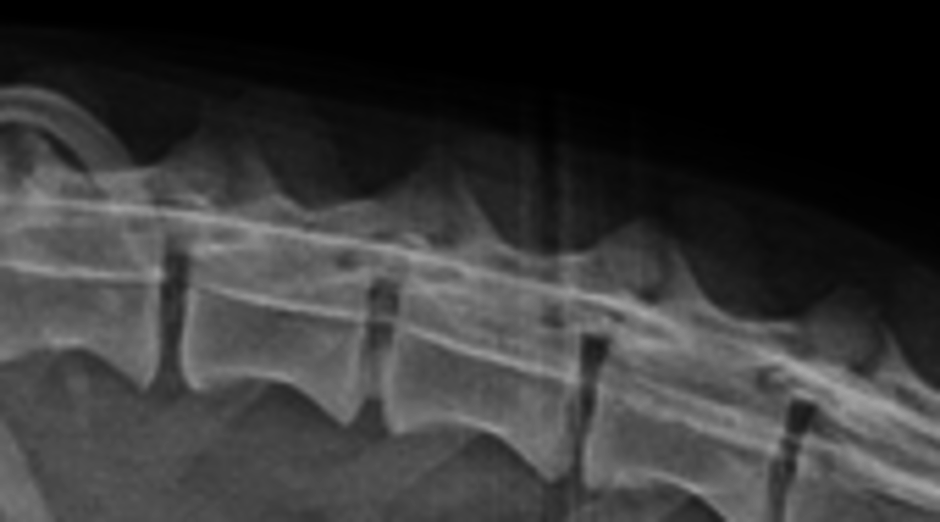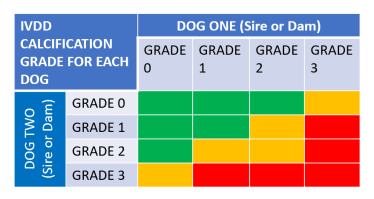
What do the X-ray scores mean?
Scoring calcifications
Scoring of the X-rays is done by one of the veterinary specialists in Scandinavia (Dr Anu Lappalainen) to ensure consistency of approach.
Owners will be informed of the “score”, which will comprise the grade and the total number of calcifications, plus their location in the spine.
Grade 0 = 0 calcifications
Grade 1 = 1-2 calcifications
Grade 2 = 3-4 calcifications
Grade 3 = 5 or more calcifications
Breeding advice:
The matrix below shows the possible breeding combinations and our current advice.
Green: The lowest risk of breeding dogs affected by IVDD.
Amber: A higher risk of producing puppies that may grow up to be affected by IVDD.
Red: A mating which has a high risk of producing puppies that may grow up to be affected by IVDD. These matings are not recommended.
Producing puppies affected by IVDD has a serious impact on their health and welfare.
It is clearly going to take time to screen and report results for UK dogs and it may, therefore, be impossible to adhere rigidly to the advice given above, at least in the short-term. Our early UK results show that, across all 6 varieties of Dachshund, about 30% of dogs have a score of 5+ calcifications. It would not be sensible from a genetic diversity perspective to remove all these dogs from the gene pool by not breeding from them. A more measured approach will be required. Hence our recommendations in the Red-Amber-Green matrix.
In the absence of screening data, owners will have to use their best judgment, knowledge of pedigrees and information on family history of IVDD to make informed breeding decisions.
It has been shown that calcifications are highly heritable [Jensen 2000] and dogs with many calcifications are likely to produce puppies with calcifications. In this study, if both parents had calcifications, 91% of their offspring did too; if just one parent had calcifications, only 44% of their puppies had them.
Numerous studies (since the 1960s) have shown that the lower the number of calcifications, the lower the risk of IVDD. In one study, of the dogs which had no calcifications, less than 1 in 10 had IVDD symptoms. In contrast, of the dogs with 5 or more calcifications, two-thirds had symptoms of IVDD. [Lappalainen 2001] Another study showed that dogs with 5 or more calcifications were 18 times more likely to have IVDD symptoms than dogs with no calcifications. [Lappalainen 2014]
If your dog's X-ray score is IDC3 (5+ calcifications), ask yourself these questions before deciding whether the dog should be bred from:
- Did this dog's parents ever have a back problem that needed veterinary treatment?
- Have any of this dog's brothers or sisters ever have a back problem that needed veterinary treatment?
- Did the dog or bitch you are thinking of mating with yours ever have a back problem that needed veterinary treatment?
- Have any brothers or sisters of the dog or bitch you are thinking of mating with yours ever have a back problem that needed veterinary treatment?
The more of these questions where you answer "Yes", the higher the risk of your proposed litter having back problems.
A mating which may produce affected puppies should never knowingly be carried out.


